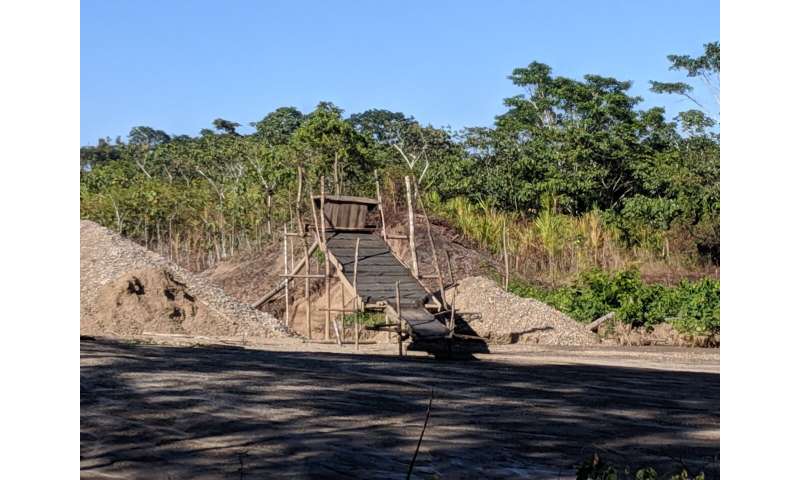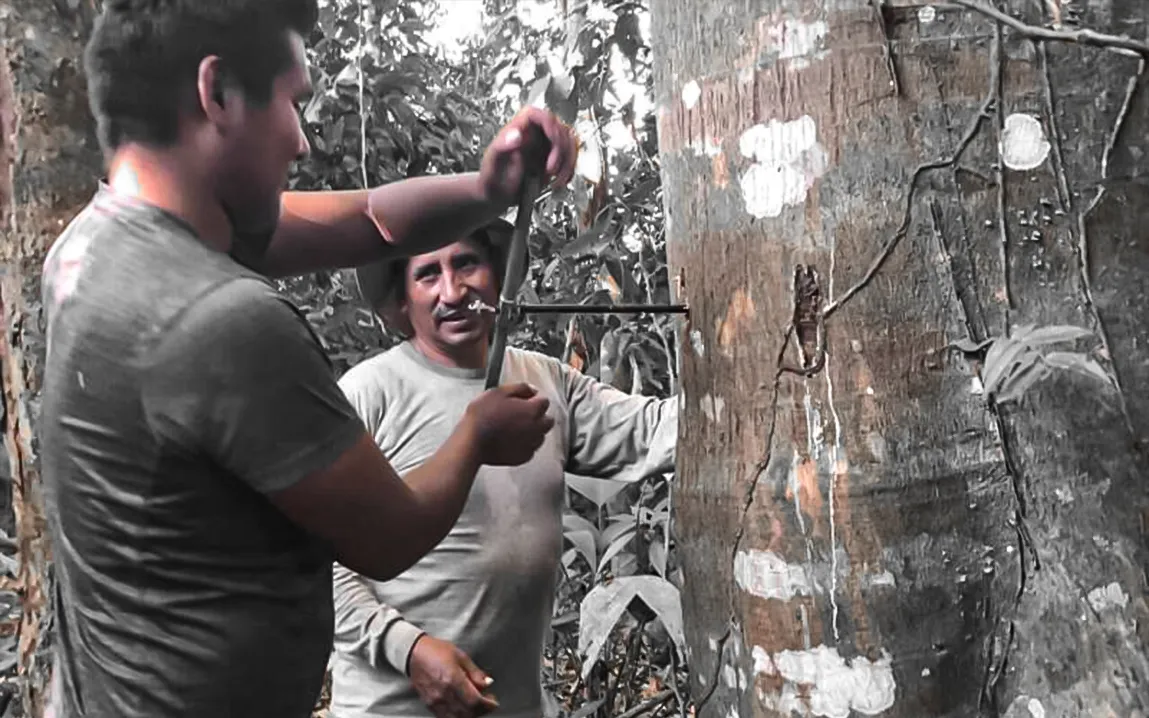The Amazon rainforest has long been a source of gold and controversy. As long as demand for gold is high, contemporary gold particles are becoming ever smaller and harder to extract. That has led an increase in artisanal and small-scale gold mining (ASGM), especially in Peru’s Amazon, where mercury is used regularly to extract gold, with poisonous impacts on the environment and human health.
Now, a team of scientists around the world has discovered a promising new method to detect that pollution, by examining tree rings.
Published in Frontiers in Environmental Science, the new study suggests that certain trees in the Amazon, specifically Ficus insipida, can act as biomonitors, recording the presence of atmospheric mercury (Hg) through the levels embedded in their annual growth rings.
“We show that Ficus insipida tree cores can be used as a biomonitor for characterizing the spatial and potentially the temporal footprint of mercury emissions from artisanal gold mining in the neotropics,” said Dr. Jacqueline Gerson, lead author of the study and assistant professor of biological and environmental engineering at Cornell University.
“Trees can provide a widespread and fairly cheap network of biomonitoring, by archiving a record of mercury concentration within tree bolewood.”
How Is Mercury Released Into The Amazon?
To extract gold, ASGM miners mix soil with mercury, which binds to gold particles and forms a soft mixture called an amalgam. These amalgams are then burned, releasing gaseous mercury into the air, which can travel through the atmosphere and settle in nearby ecosystems.
Though effective in isolating gold, this process has worse side effects, contaminating the air, soil, and rivers. Mercury can also accumulate in the food chain and impact human communities, especially indigenous populations living near mining areas.
Using Trees to Track Mercury Emissions
The researchers focused on three tree species commonly found in the Peruvian Amazon:
- Ficus insipida (wild fig)
- Bertholletia excelsa (Brazil nut)
- Cedrelinga catenaformis (tornillo)
Because of the stable, year-round climate in the Amazon, many trees don’t form clear rings, but Ficus insipida is an exception. Its rings can be dated with accuracy, making it ideal for temporal analysis.
“The trees in the study were all the same species and from the same sites, exposed to the same atmospheric Hg concentration,” explained Gerson. “That is why we sample multiple trees and then use average values.”

Samples were collected from five sites:
- Two, far from mining activity
- Three, within five kilometers of known gold-mining towns where mercury is regularly burned
- One of the mining sites was located next to the protected forest, providing an important contrast
The results were clear, the trees located close to mining sites contained higher concentrations of mercury, especially in rings formed after the year 2000, a period associated with increased mining.
“Higher atmospheric Hg concentrations are generally associated with nearby mining locations,” Gerson said. “In the Peruvian Amazon, where mining is the main source of Hg, the association between higher Hg concentrations and proximity to a mining site can readily be drawn.”
A Network of Silent Witnesses
While the study proves trees like Ficus insipida can act as environmental “witnesses” to illegal gold mining, it’s not that easy. Researchers note that distances to illegal mining camps were not always known, which is unsurprising given their underground nature, which may have influenced how much mercury reached the trees.
“Ficus insipida can be used as a cheap and powerful tool to examine large spatial trends in Hg emissions in the neotropics,” Gerson said. “Using bolewood could allow for regional monitoring efforts.”
Implications for Global Mercury Policy
The study also supports efforts aligned with the UN Minamata Convention on Mercury, a global treaty designed to reduce mercury emissions and mitigate their harmful effects. Monitoring emissions is central to enforcing such international agreements, and trees might be the key to closing data gaps, especially in hard-to-reach or illegally mined areas.
“This is particularly important in relation to the UN Minamata Convention,” Gerson added.
The team’s work offers a new lens through which to view the consequences of illegal gold mining and a new path forward in the fight to protect the Amazon and its people



